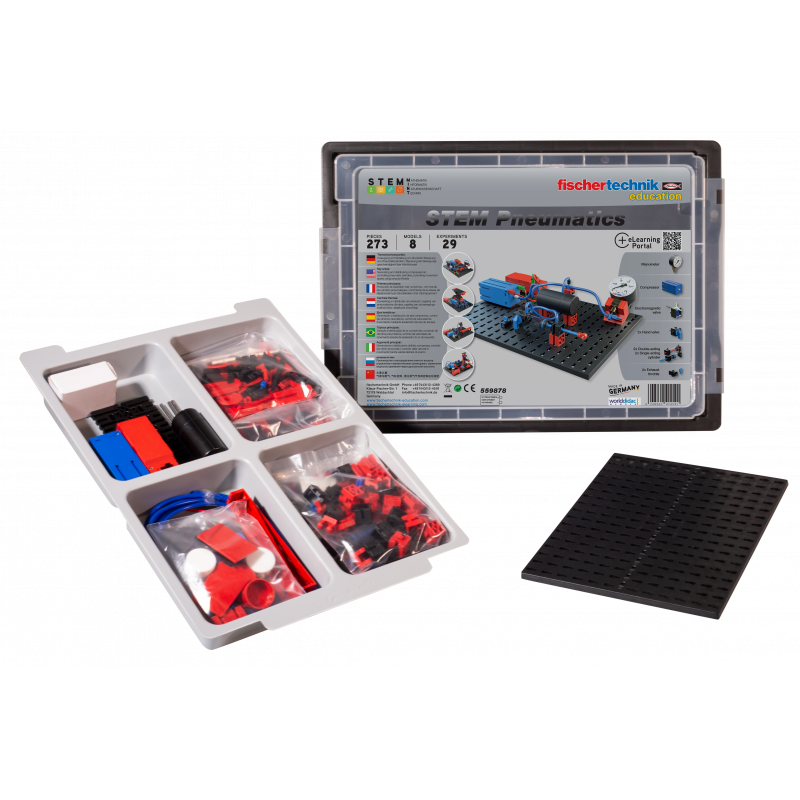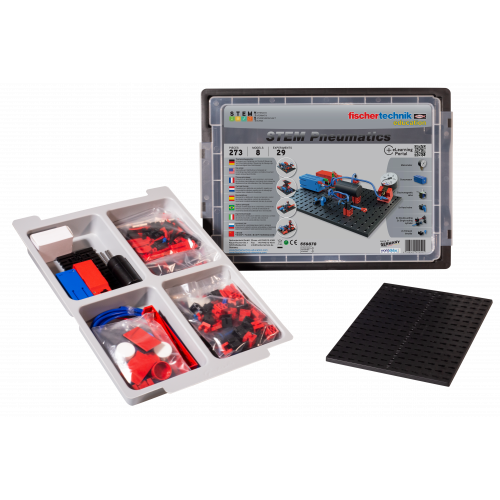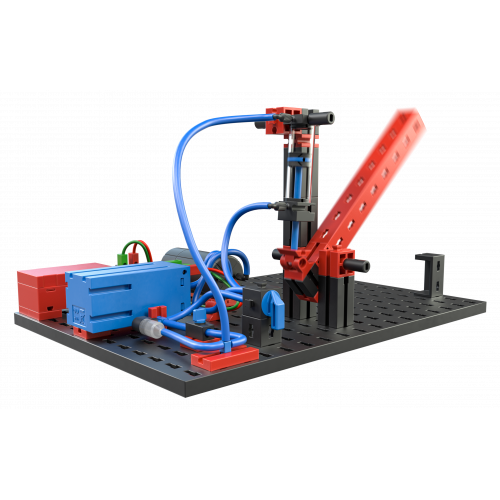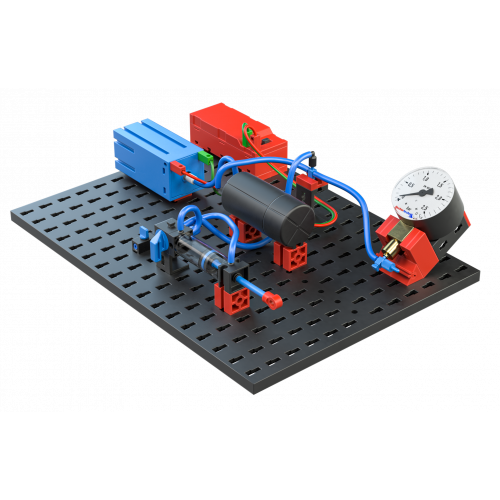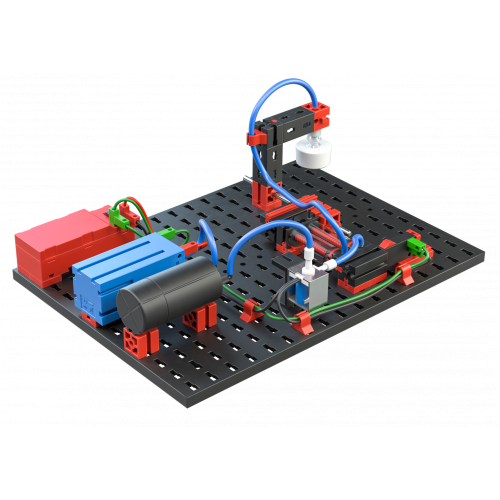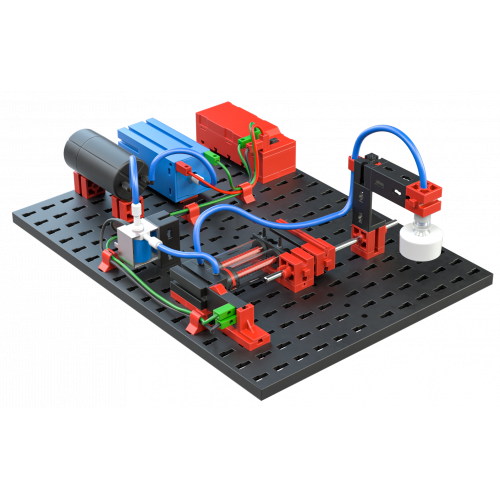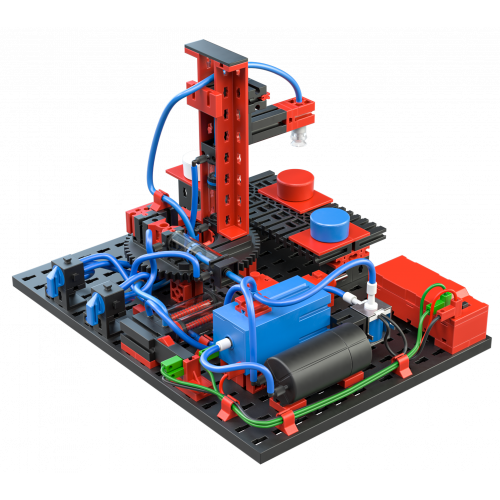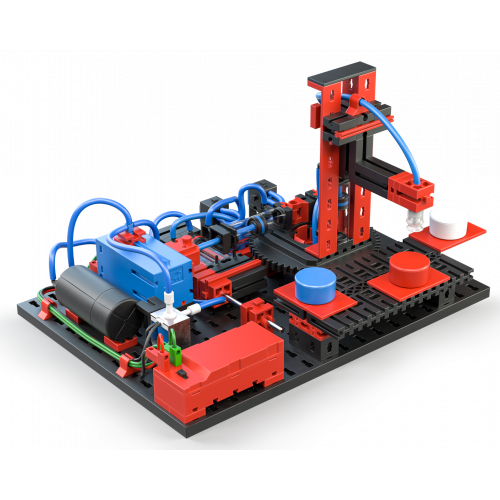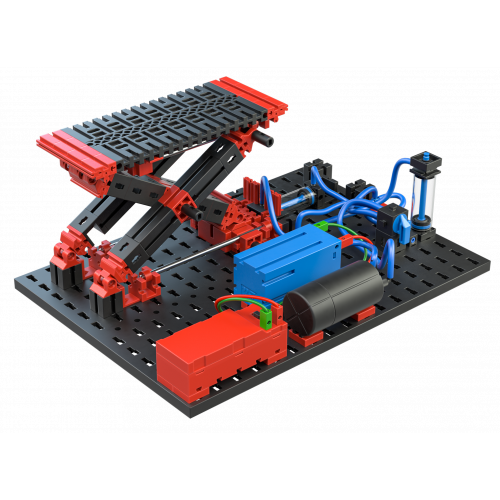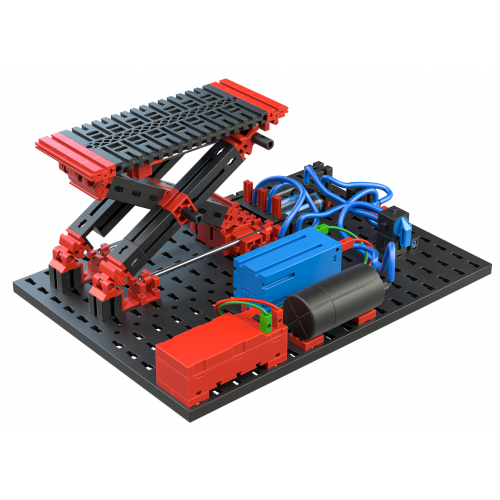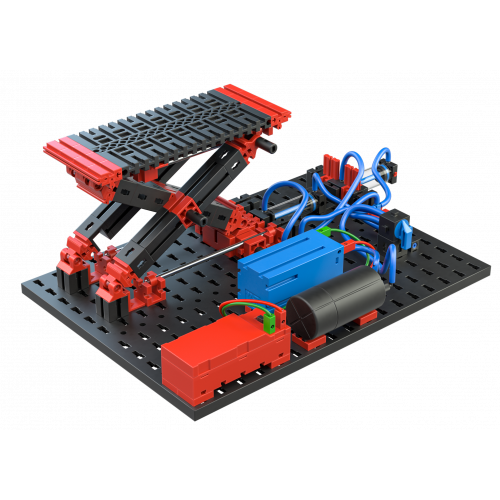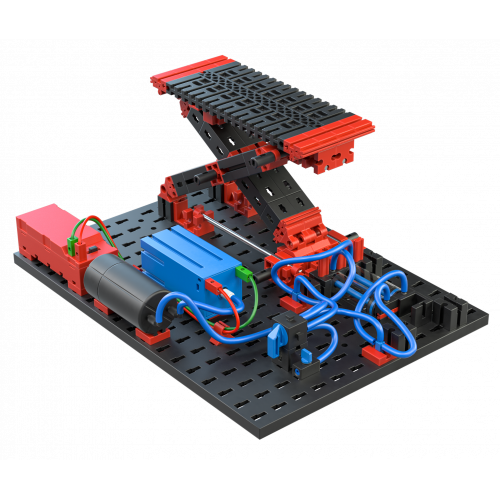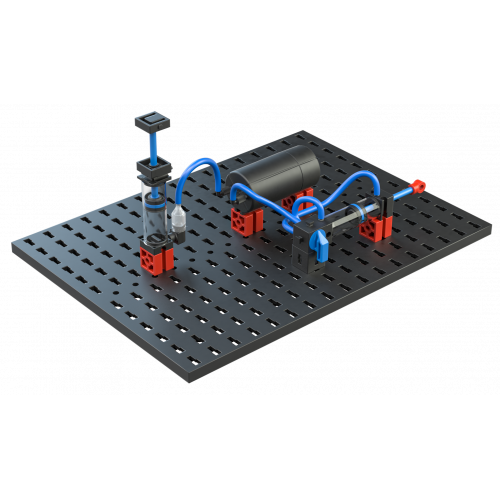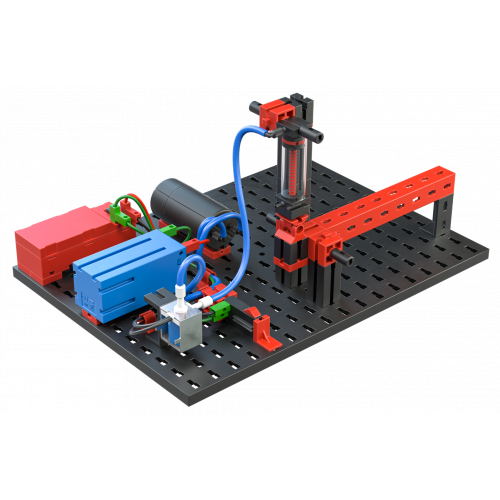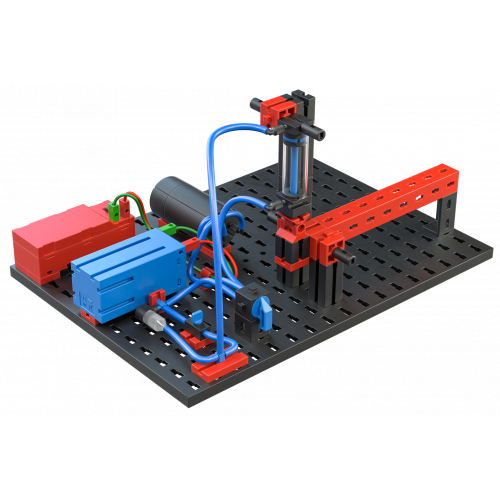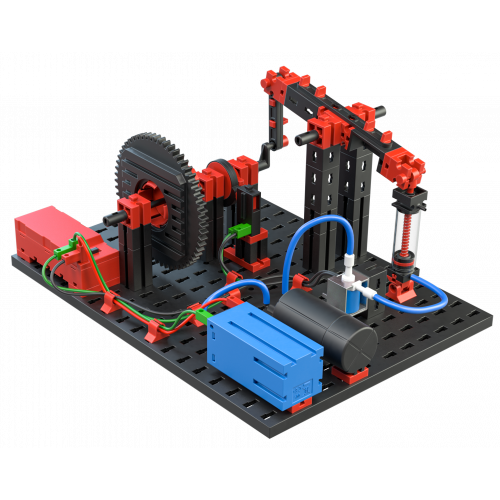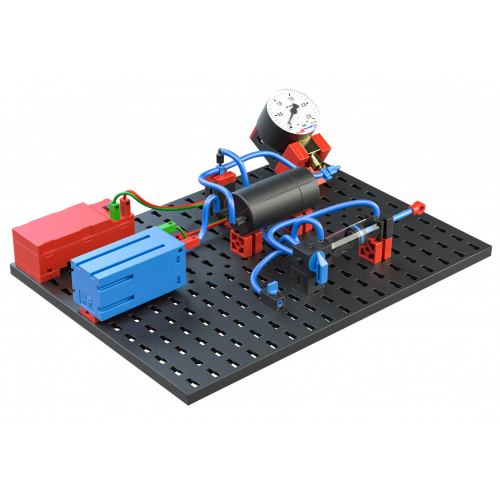STEM Pneumatics
Are you a school or company and do you want to order on account? Please contact us.
The first experiments with pneumatics were conducted in the third century B.C., and discovered the extreme versatility and usefulness of compressed air. Using 8 models and 29 experiments, STEM Pneumatics teaches the basic principles of pneumatics, and demonstrates the functioning of components like compressors, pneumatic valves and cylinders, as well as an exhaust throttle valve. The concept also includes a full set of lesson plans for teachers.
Accompanying teaching material:
fischertechnik Education products include comprehensive, freely accessible teaching materials. These have been developed together with teacher training colleges, teachers and didacticians and are ideally suited to the needs of the classroom. In addition to the topic introduction, lesson plans with task sheets and educational plan references are available.
- The topic introduction provides content that can be optimally used for lesson preparation and integrated into the lessons. Definitions, history, basic knowledge and much more are provided.
- The teaching material includes an overview of the learning objectives as well as the time required for the tasks.
- In line with the curriculum-relevant topics, various tasks are included within which different experiments are dealt with.
- The tasks are divided into a construction task, thematic task and experimentation task. In this way, one progresses from building, to learning technical content, to applying the acquired knowledge.
Highlights:
Regulation of the speed of movements via the throttling of the exhaust air
Movement in different directions
Different applications and types of valves
Generating and distributing compressed air
Controlling pneumatic cylinders
Top Facts:
273 components are included
8 quickly buildable models and 29 exciting experiments for secondary schools
The time required for the task sheets is 45 to 90 minutes
Enclosed printed assembly instructions
Suitable for group work of 2 to 4 pupils

























